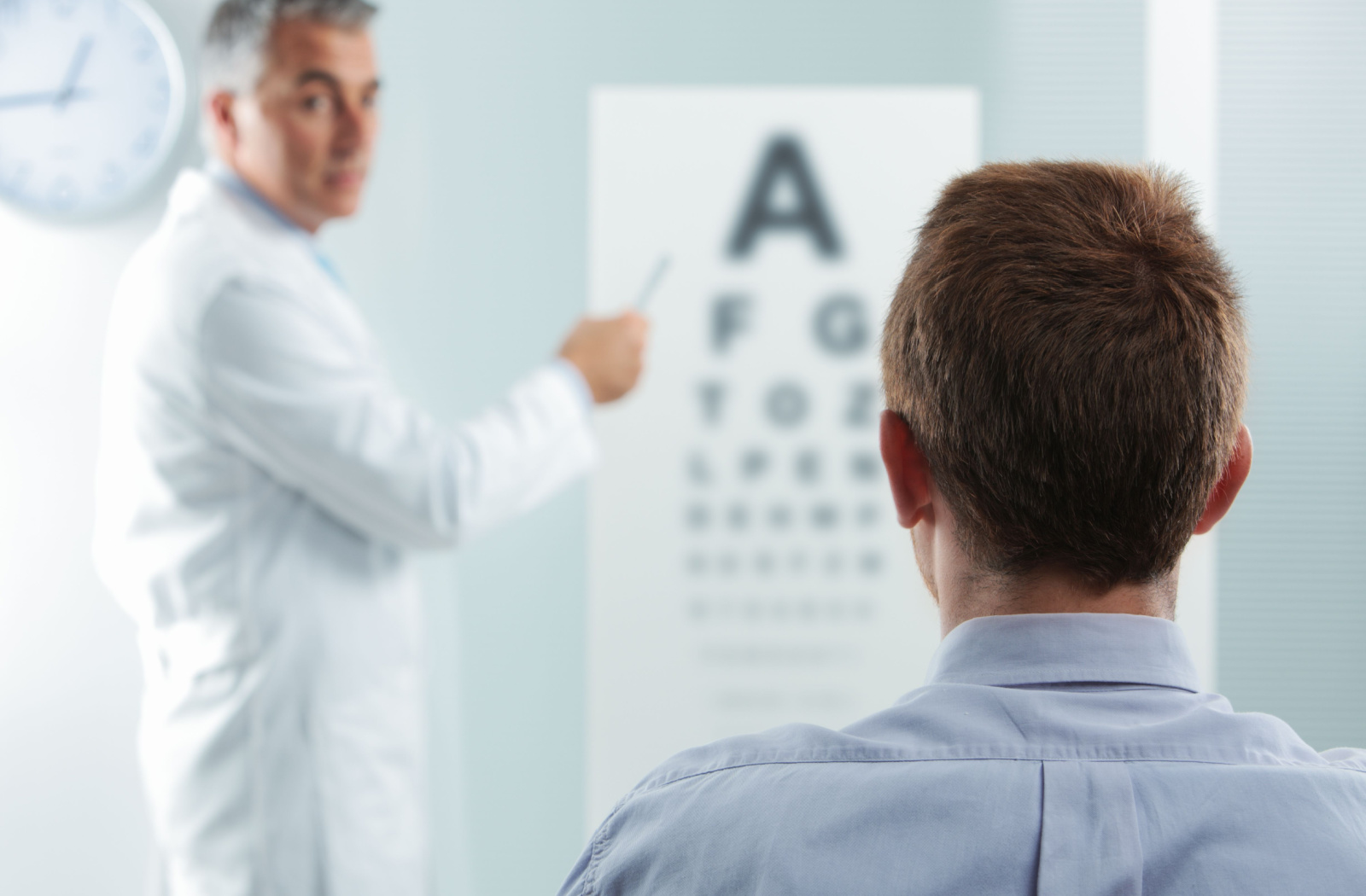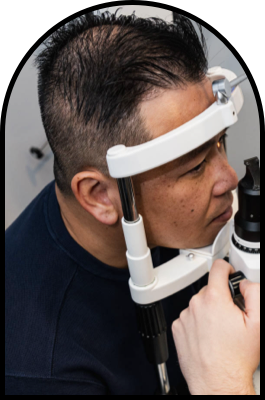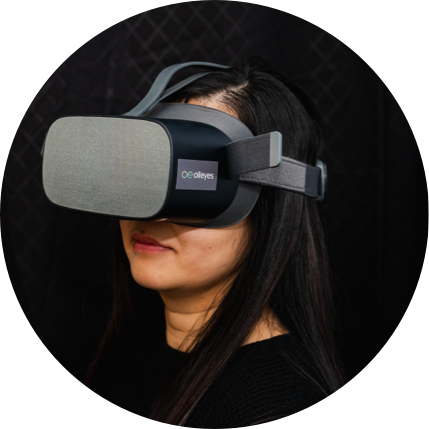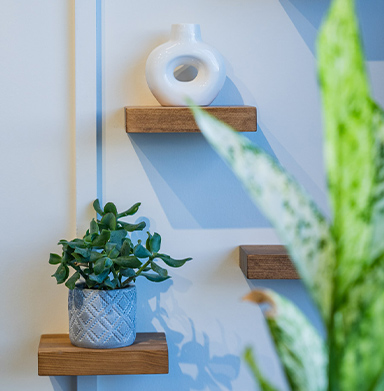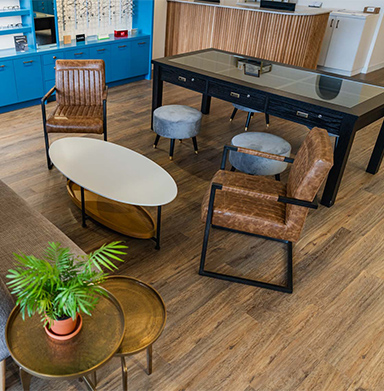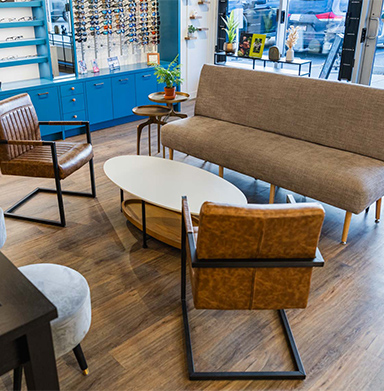Eye exams remain a crucial part of our healthcare routines, yet many people tend to push them off. Sometimes this happens because we are busy and we are unsure if we have the time to stop and give our eyes the care they deserve. Naturally, knowing the length of an eye exam can help you plan your day, and for the time-conscious, help you set expectations.
An average eye exam can take up to 1 hour, depending on what kinds of tests you require and your overall eye health. An eye exam is more than checking if you need glasses, it allows your optometrist to watch for signs of eye disease. An hour every year or so is a small price to pay for the peace of mind a comprehensive eye exam can offer.
What Happens at an Eye Exam?
An eye exam is designed to be thorough. It is our chance to really get an idea of what is going on inside your eyes, so we want to make the most of it. But it should not be stressful! Many of the tests are simple and depend on your age and symptoms.
Pre-Exam Procedures
Before you even glance at a chart, we need to get to know you with a series of pre-exam steps. An optometrist assistant may perform some noninvasive preliminary tests to set a baseline. This could include a review of your medical history and current symptoms to help determine what testing you may need.
If you are returning to the same optometrist, this step may go faster since they generally have your information on file and already have some idea of what to look for.
Visual Acuity Testing
A visual acuity test is a common part of nearly every eye exam. Think of it as a gauge for your eyesight’s clarity. Your optometrist will have you look at a chart or screen with letters or symbols of different sizes. They will then cover one of your eyes and ask you to read out the smallest line of letters you can.
This gives us a general idea of how well you can see, but it may just be a starting point. We can also use a refraction test to hone in on your precise prescription strength. Much like a visual acuity test, your optometrist will ask you to read letters off a chart or screen. This time, however, you will look through a phoropter, an instrument that resembles a large pair of binoculars.
Your optometrist can change the lenses inside the phoropter and ask you which lens helps you see clearer. This back-and-forth is vital but can lengthen your appointment, particularly if you require complex corrections.
Eye Health Evaluation
Using a tool such as a slit lamp, your optometrist can examine your eye’s structure, looking for any abnormalities or signs of disease. This in-depth evaluation allows us to consider your eyes as a whole. Damage on your retina could indicate age-related macular degeneration (AMD) while dry eyes could mean issues with your tear film.
Tonometry
Tonometry is a test that helps your optometrist measure the pressure inside your eye, or intraocular pressure (IOP). High IOP is one of the main signs of glaucoma, a serious eye condition that can lead to vision loss if it is not treated. Tonometry is vital since glaucoma usually presents without symptoms until it begins damaging your vision.
Your optometrist may use an air puff test or a gentle plunger to measure your IOP. It may feel slightly uncomfortable for a moment, but it should not hurt.
How Often Should I Have an Eye Exam?
Your eye exam frequency depends on your age. Children and seniors tend to experience more changes to their vision, so it is a good idea to visit the optometrist more. Generally, the Canadian Association of Optometrists recommends this schedule:
- Infants: First exam between 6–9 months
- 2–5 years: At least 1 exam before starting school
- 6–18 years: 1 exam annually
- 19–64 years: 1 exam at least every 2 years
- 65+ years: 1 exam annually
Generally, 2 years is the longest you should ever go between eye exams. Our eyes are constantly changing, and diagnosing eye diseases such as glaucoma or AMD early can improve treatment outcomes. That is why we recommend everyone have an eye exam every 12 months. There is no harm in having annual exams, and it typically makes you safer.
Certain people may be at a higher risk of eye disease, such as those with diabetes, high risk medications, and contact lens wear, and should almost certainly visit their optometrist more frequently. In the end, listen to your optometrist’s recommendations.

Book Your Eye Exam
Regular eye exams go beyond updating your prescription, they can detect early signs of eye diseases and potential health issues. While your eye exam’s length can depend on what tests you need, investing an hour or less in this appointment is investing in your future well-being.
At Chestermere Optometry, our experienced team tailors our eye exams to your family’s needs. Whatever your age, healthy and happy eyes can guide you toward a vibrant life, so book your eye exam today!


